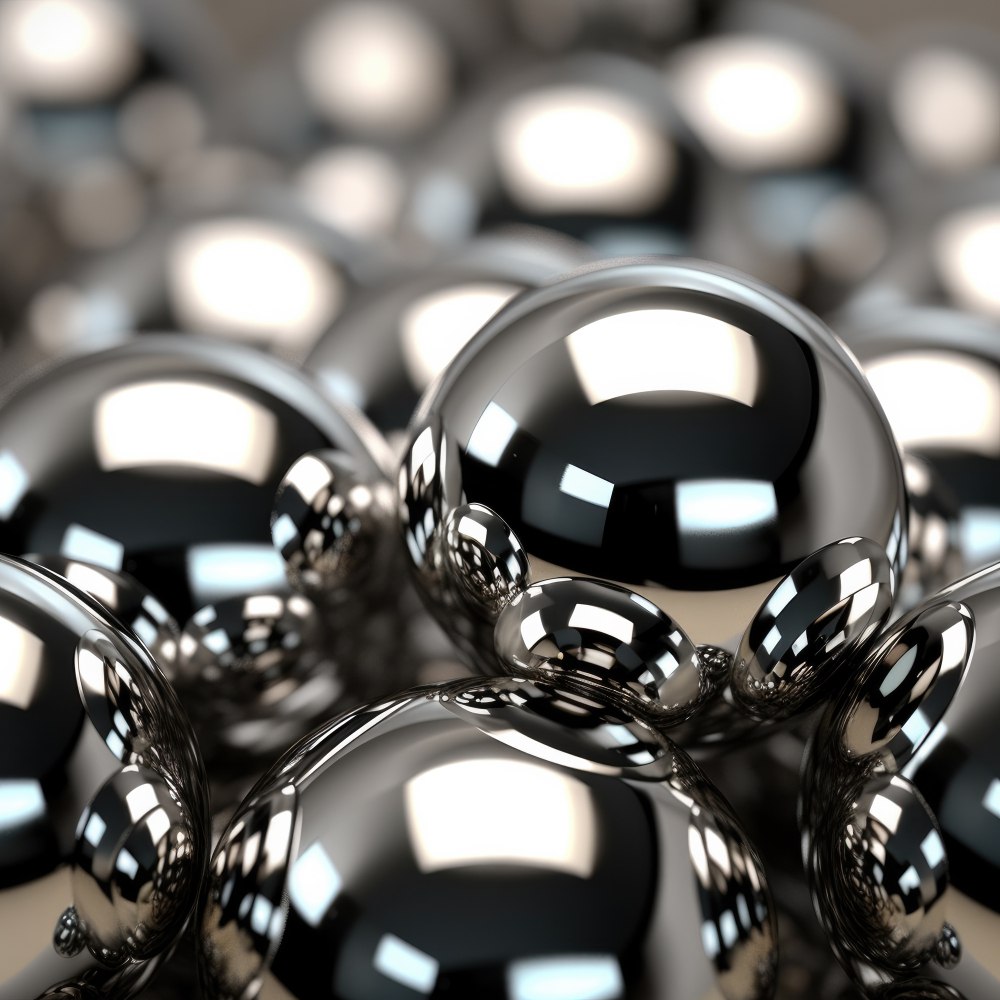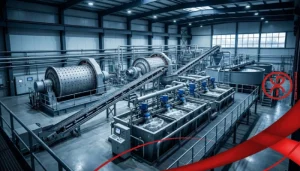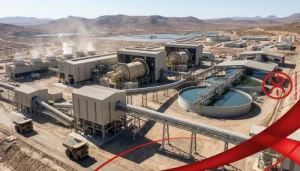In the intricate choreography of ball milling, where raw materials undergo a metamorphosis into finely milled particles, the choice of grinding media emerges as a critical performance determinant. Despite its seemingly modest role, the selection of grinding media exerts a profound influence on the efficiency, output quality, and ultimately, the bottom-line impact of the milling process. Whether operating within the domains of pharmaceuticals, ceramics, or materials science, the judicious choice of grinding media holds the potential to unlock breakthrough efficiencies and elevate product quality to unprecedented heights.
This article stands as a definitive roadmap, meticulously crafted to navigate the labyrinthine nuances of selecting the most appropriate grinding media tailored to your unique milling requisites. By placing a laser focus on optimizing milling operations, our objective is twofold: to augment process efficiency and to elevate the caliber of your final product. Through a comprehensive exploration of factors influencing grinding media selection, we endeavor to empower you with the knowledge necessary to make informed decisions that resonate with your specific milling objectives.
Exploring Ball Milling
Ball milling stands as a mechanical method employed to grind and blend materials, aiming to achieve finer particles. This process entails placing a powder mixture within a rotating drum, accompanied by grinding media, typically balls. The kinetic energy generated by the motion of these balls fractures the powder, resulting in smaller fragments. Such a technique holds immense significance across various industries.
In mining, ball milling finds application in ore processing, facilitating the extraction of valuable minerals. The pharmaceutical sector harnesses its potential to ensure uniform particle sizes, thereby enhancing drug solubility and absorption rates. Ceramics, too, reap benefits from ball milling, attaining finely homogenized powders crucial for premium-quality pottery and tiles.
The selection of grinding media emerges as a pivotal factor dictating the efficacy of the ball milling process. Varied materials, sizes, and densities of grinding media wield substantial influence over the energy transfer during milling, thereby impacting the rate and uniformity of particle size reduction. Consequently, this choice exerts a direct bearing on product quality, influencing attributes like purity, particle size distribution, and surface area.
Moreover, the chosen grinding media can introduce disparities in operational expenses. Factors such as media longevity, energy consumption, and maintenance requisites all contribute to the overarching cost-effectiveness of the milling endeavor. Hence, a nuanced comprehension of the intricate interplay between grinding media and milling outcomes proves imperative for optimizing both the process and the resultant product.
Varieties of Grinding Media
Grinding media, essential for the effectiveness of the ball milling process, are available in diverse materials, each boasting distinctive traits and benefits tailored to precise applications.
- Ceramic Balls:
Crafted from materials like silicon nitride, alumina, and zirconia, ceramic balls are prized for their remarkable hardness and resilience against wear, corrosion, and high temperatures. These attributes render them ideal for scenarios necessitating high purity and minimal contamination, such as pharmaceuticals, food processing, and advanced ceramics manufacturing. Ceramic balls safeguard the integrity of the milled substance by averting any material deterioration and chemical interactions. Moreover, their lightweight nature contributes to decreased energy consumption during milling.
- Steel Balls:
Primarily fashioned from carbon steel, stainless steel, or alloy steel, steel balls are celebrated for their elevated density and impact resistance. Consequently, they excel in strenuous milling endeavors within mining and cement production, where sturdy grinding media are indispensable for efficiently breaking down tough materials. Steel balls are esteemed for their resilience and cost-effectiveness, striking a balance between initial investment and operational longevity. Nevertheless, they might introduce contamination in sensitive products, constraining their usage in select pharmaceutical and food applications.
- Additional Materials:
Glass and plastic balls cater to specialized applications, where considerations like chemical inertness and specific gravity hold significance. Glass balls find utility in non-abrasive milling environments, typically where contamination avoidance is paramount. Meanwhile, plastic balls, boasting the lowest density among grinding media, serve in scenarios demanding minimal impact strength and utmost chemical compatibility.
Choosing the Right Grinding Media: Key Considerations for Optimal Milling
Selecting the appropriate grinding media entails meticulous evaluation of various factors, ensuring the attainment of optimal milling efficiency and top-notch product quality.
- Material Characteristics:
The chemical composition of the grinding media holds paramount importance, directly influencing product purity and susceptibility to chemical reactions during milling. For example, ceramic balls, crafted from materials like alumina or zirconia, boast chemical inertness, rendering them ideal for applications where contamination could jeopardize product integrity, such as pharmaceuticals or food processing. Conversely, steel balls may introduce iron contamination but are favored in operations where such impurities do not impact the final product, such as certain mineral processing endeavors.
- Size and Shape Influence
The size and shape of grinding media exert significant influence on both the milling process efficiency and the final product’s particle size distribution. Smaller media facilitate finer particle size reduction but may necessitate prolonged milling durations. Conversely, larger media enable faster size reduction but might not achieve the desired fineness. Additionally, the shape of the media impacts milling efficiency, with spherical balls typically offering superior performance due to their effective rolling and cascading action.
- Hardness and Density Considerations
The hardness and density of grinding media directly impact their wear rate, thereby affecting efficiency and longevity. Harder and denser materials, such as certain ceramics and steels, exhibit prolonged durability during the milling process, reducing the frequency of media replacement and ensuring consistent milling conditions over time. However, excessively hard media may risk damaging the material being milled, necessitating a balanced approach tailored to the specific application.
- Cost-Effectiveness
When selecting grinding media, it’s crucial to balance the initial cost with long-term expenses. While ceramic balls may require a higher upfront investment, their durability and lower wear rate often result in greater cost-effectiveness over time, leading to reduced operational costs. On the other hand, steel balls, with their lower initial cost, may necessitate more frequent replacements, potentially increasing long-term expenses.
In conclusion, the selection of grinding media is a critical aspect of the ball milling process, influencing both its efficiency and the quality of the final product. By considering factors such as material composition, size and shape, hardness and density, and cost-effectiveness, manufacturers can make informed decisions to optimize their milling operations. Choosing the right grinding media ensures efficient particle size reduction, maintains product purity, and minimizes operational costs over time. Through careful evaluation and selection, manufacturers can achieve consistent and high-quality results in their milling processes, leading to improved productivity and profitability.
Frequently Asked Questions
- What is grinding media, and why is it important in ball milling?
Grinding media refers to the materials used in ball milling to grind, blend, or homogenize substances. It’s crucial because the choice of grinding media significantly affects the efficiency and quality of the milling process.
- How does the composition of grinding media impact the milling process?
The composition of grinding media directly influences factors like product purity, chemical reactions, and contamination. For instance, ceramic balls are chemically inert, ideal for applications where purity is essential, while steel balls may introduce iron contamination but are preferred in certain mineral processing operations.
- What role does the size and shape of grinding media play in milling efficiency?
Size and shape influence milling efficiency and the granularity of the final product. Smaller media achieve finer particle sizes but may require longer milling times, while spherical balls typically offer the most efficient milling due to their effective rolling and cascading action.
- How do hardness and density impact the performance of grinding media?
Hardness and density affect wear rate and durability. Harder and denser materials endure longer milling processes, reducing the frequency of media replacement. However, a balance must be struck to avoid damaging the material being milled.
- Which factors should be considered to ensure cost-effectiveness when choosing grinding media?
Considerations include the initial cost versus long-term expenses. While ceramic balls may have a higher upfront cost, their durability can make them more cost-effective over time. Conversely, steel balls, though cheaper initially, may require more frequent replacements, increasing long-term expenses.
- How can manufacturers optimize their milling operations through the selection of appropriate grinding media?
By carefully evaluating factors like material composition, size, shape, hardness, density, and cost-effectiveness, manufacturers can choose grinding media tailored to their specific process requirements. This ensures efficient operation, high-quality products, and cost-effective production in their milling processes.





